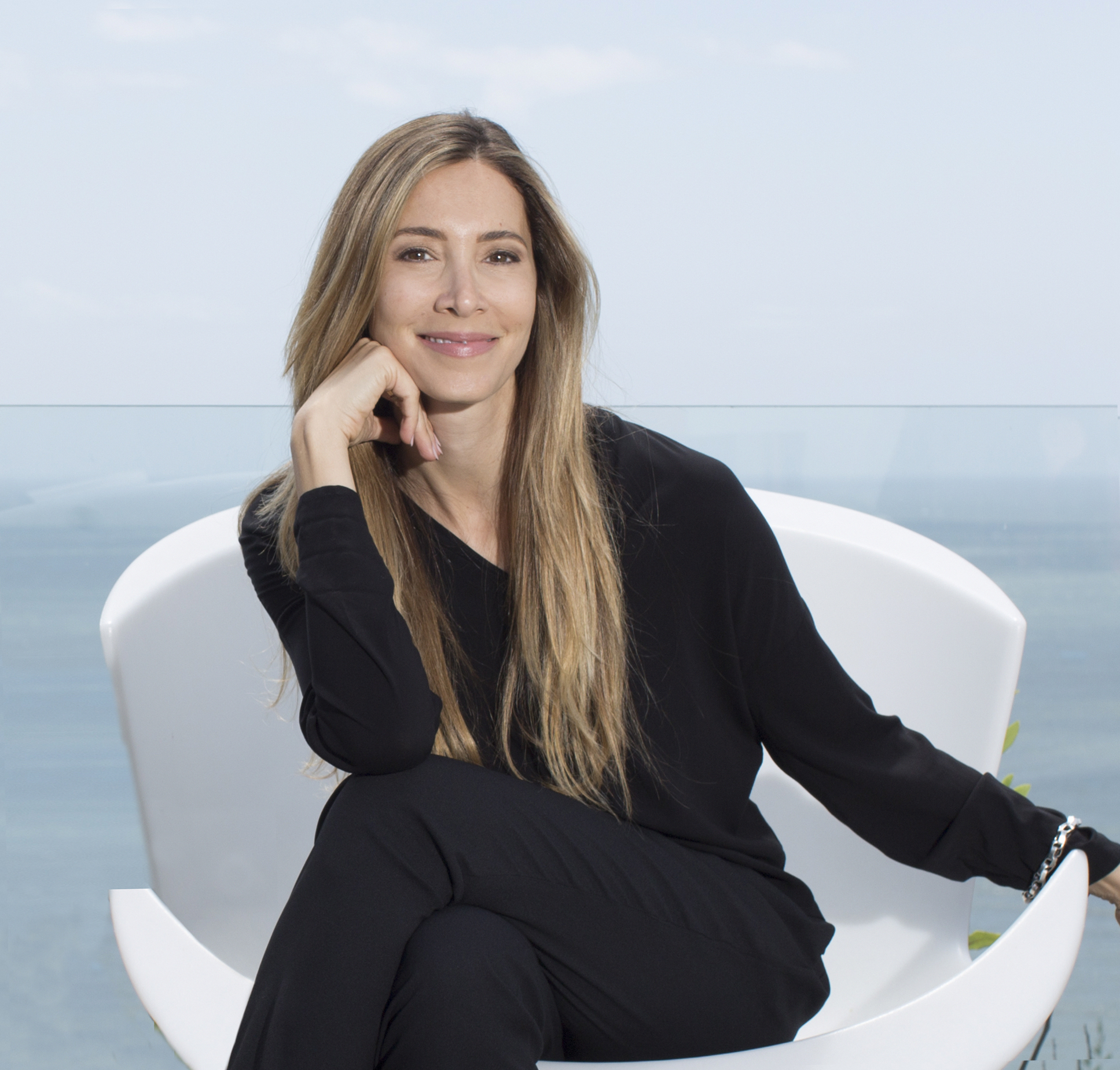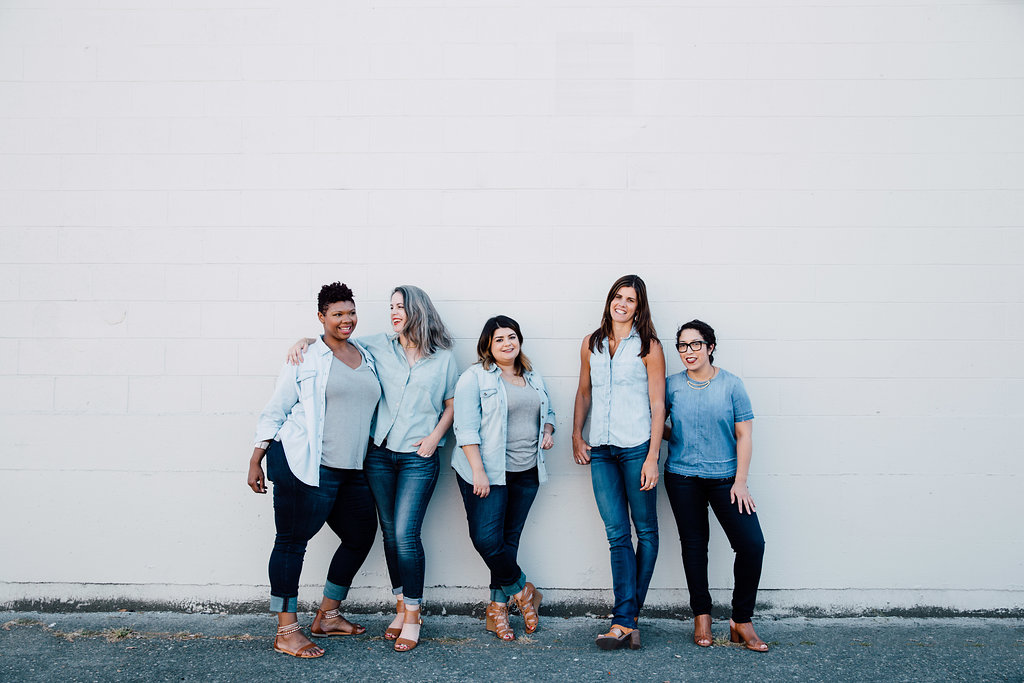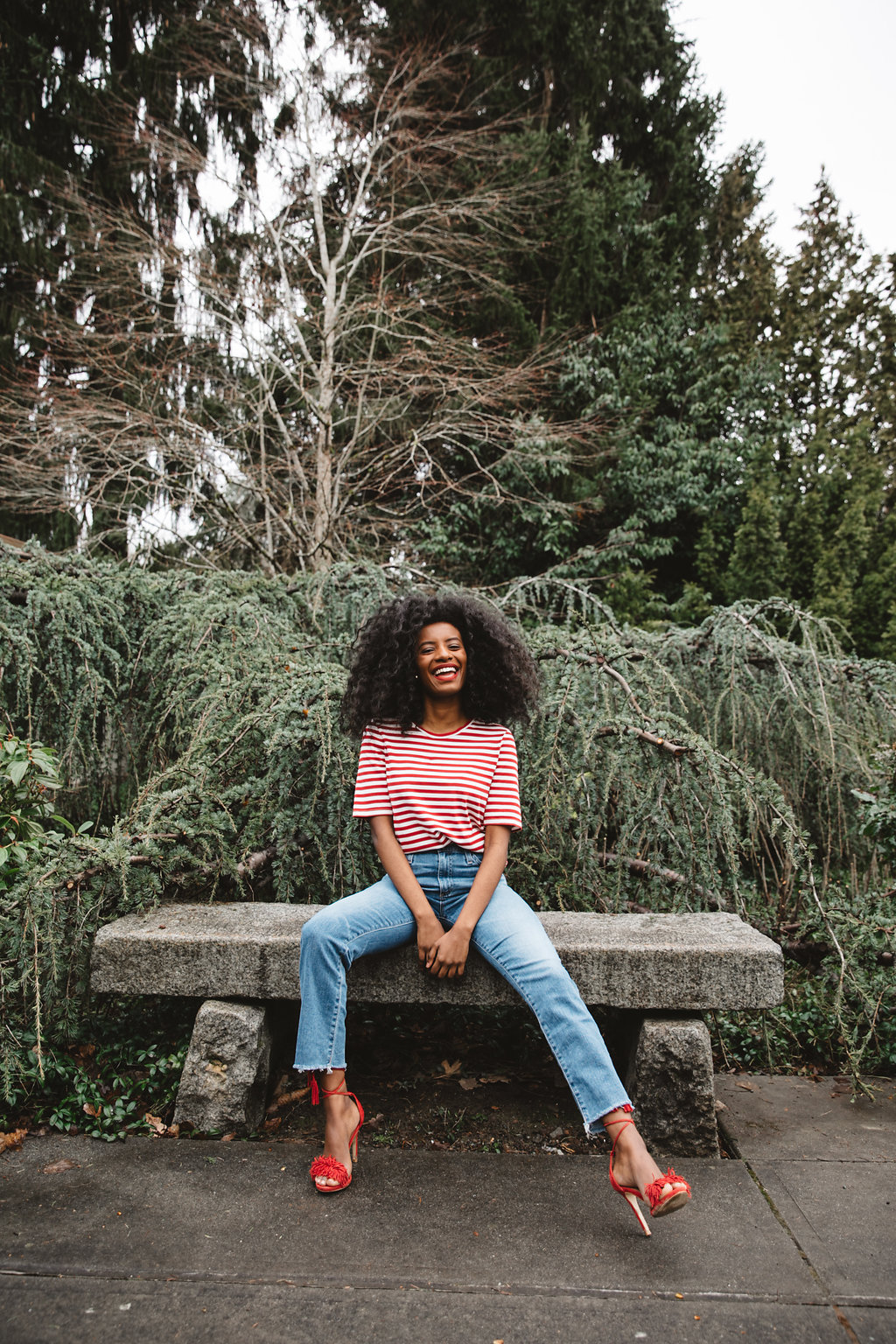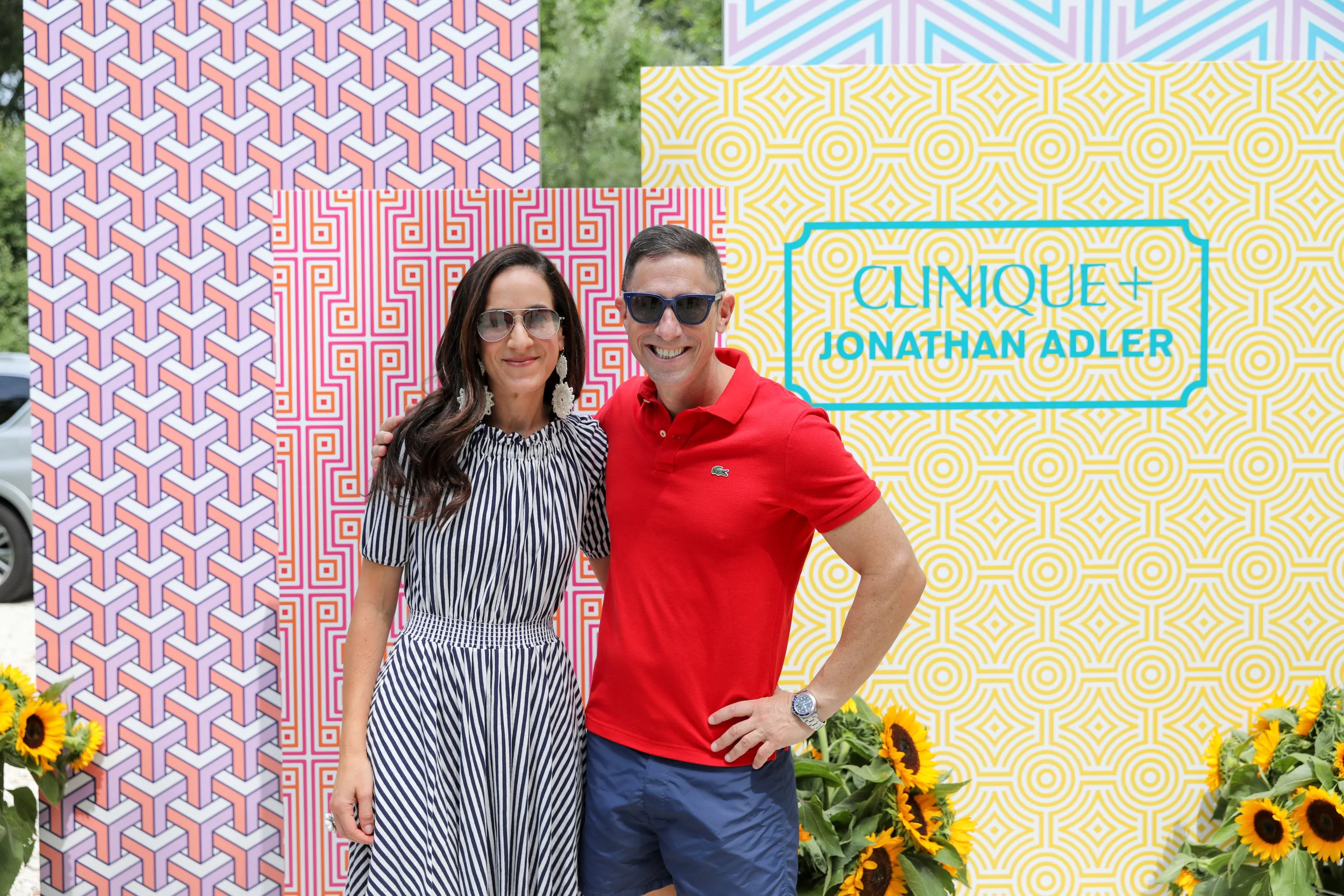How This Massive IG Star Handles the Haters
How Cold-Calling Chanel Landed One Woman Her Dream Job
How This Touring Photographer Survives Life on the Road
This Is How You Thrive After Bankruptcy
Weed Need to Talk: I Had an Unconventional & Controversial Job
This Sought-After LA Designer Has So Much Going On (Your Head Will Spin)
Hollywood Roundtable: 4 Actresses Talk Sexism in Tinseltown
How to Own Your Glow During the Most Dysfunctional Season of All
Find Out Why Lisa Ling Is the Most Exposed She's Ever Been
F*ck Cancer Founders On Turning The F Word into a Rallying Call
Why Genevieve Padalecki Says the World Is a Crazy Place Right Now
How a Burning Man Honeymoon Led This Founder to Change Her Biz Model
A Day in the Life: From Auto Designer to Sustainable Fashion Boss
Designer Vicki von Holzhausen grew up next to the Art Center College of Design in Pasadena, a school she calls, "one of the best for design." In high school she attended their industrial design classes where she discovered a love for the automotive. "Cars," von Holzhausen says, "are basically the most intricate and impactful products one can design so I immediately gravitated to them." She ended up attending Art Center College, in CA as well as on their European campus, where she was exposed to the German automakers which lead to an award-winning career at Mercedes in Germany.
Though it's not a world inhabited professionally by many women, von Holzhausen says, "the interesting part is that 85% of car purchasing decisions are made by women so there should be more women in it. I think it's a matter of exposing female design students." She's thankful she was exposed at a young age. She's also married to Tesla chief designer Franz von Holzhausen, who certainly knows a thing or three about sustainability.
But as of 2015, the designer made the full time switch from automotive design to handbag designer with the launch of her sustainable Malibu-based von Holzhausen bags and accessories-- product set apart as a result of her time in auto design. As a lifelong career fan of German industrial designer, Dieter Rams, the founder explains that she still abides by many of his design principles. "The ones that resonate with me the most are that good design should be honest, aesthetically pleasing, and environmentally friendly. My goal was to build a brand based on the principle that I believed in: a future-minded approach, timeless style, and sustainability."
"Good design should be honest, aesthetically pleasing, and environmentally friendly."
Tweet this.
With her eponymously named von Holzhausen line she mixes old world techniques with new, both of which she says, "play a role in our sustainable approach." For instance, the brand uses an innovative substitute for leather they call "Technik-Leather," which greatly improves the waste factor. "Since Technik-Leather is created in rolls, unlike cow hides," she shares, "there are no irregular edges, allowing our patterns to lay side by side with little waste between each piece. Our traditional approach has to do with using local talent here in Los Angeles to create our bags and accessories. We also finish all the details by hand since that's the best way to ensure the highest quality. We paint all the edges of each bag by hand which looks amazing and helps ensure longevity."
We caught up with the founder to find out what a day in the life of a sustainable designer looks like, what time she calls it quits, and what she learned from her design school all-nighters.
6:30am – 7am
I wake up early to check any urgent emails and spend about ½ hour going through my daily to do list from the day before. I try and get a workout in on my good days. My quick version is an app called SWORKIT and I do the 20minute core work out. My long version is a H.I.T. class at my local gym, but I can only squeeze those in on days when I have a light morning schedule.
I get a coffee in during my work out. Preference is a black Blue Bottle pour over.
7:30 – 8:30am
Shower & dress. If I’m visiting the factory where I produce the collection, I usually wear my typical uniform like a pair of slouchy jeans and a silky button down shirt or tank and some easy slides. If I’m working at my desk, I usually wear something like a jumpsuit or tank dress with one of our new belts to make it look more put together.
Around 9am
I spend at least 1 hour with emails and figuring out the day. I eat breakfast either at my desk or on my way out the door.
I always try to be flexible when unexpected requests get thrown my way and I’m used to switching up my routine all the time. As a young business, one of the advantages is that we can move quickly without too many issues, so flexibility is a huge benefit.
10am – 11 am
I run errands and try to get to the factory by 11am. We usually review samples in progress 1st and then talk about our weekly production volume and orders in progress.
This can take as little time as ½ hour to as much time as 2 hours depending on the designs we’re working on.
Some days, I meet with other members of my team who work remotely either in the downtown LA Arts District or back on the west side of LA. Those meeting usually revolve around creative direction for photo shoots and marketing strategy.
Other days, I have lunch or coffee dates that revolve around making connections to other entrepreneurs. I’ve learned a great deal from meeting other women who work about the process of building a business.
3pm – 5pm
I’m back at my desk around 3pm to handle any new issues that rise up. Then I try to spend at least a few hours before the end of the day organizing my team for the next few days. I attempt to stay a few steps ahead of everyone so we can meet all upcoming deadlines having to do with things like new product launches, photo shoot production, and website design. There is also an endless amount of paperwork that goes with running a business so I spend a few hours in that department as well.
Most days, I spend at least another hour on various calls during the afternoon since I’m more often than not, sitting at my desk.
6pm
If I have no dinner plans, I take an early dinner with my family and spend time with them until about 9pm.
10pm
I spend at least 1 more hour later in the evening on creative work. It’s a habit I developed as a young designer in school and later in the auto industry when I spent countless all-nighters finishing projects. It’s the time of day with the least amount of interruptions so I take advantage of it.
Images courtesy of von Holzhausen.
MORE FROM OUR BLOG
How This Founder Turned a Major Problem Into 2.4 Million in Funding
How Many of You Have Done the Denim Wiggle?
The jump. The suck and shimmy. Even if you make it into your jeans, it still sucks to have to suck it in. And ordering denim online? Forget it. Without knowing how a certain brand fits you, their respective cuts and rises, it’s almost impossible to tell exactly how the pair you ordered will look on your body. Let's just agree: the return rate on online denim purchases is high.
Until now. Fitcode is a simple answer to a complicated problem. Co-founded by former model Rian Buckley, Fitcode is a fashion data company that walks women through a quick series of 5 questions about their shape. It then displays denim options that would work best based on the users answers, providing denim recommendations from brands like Paige and Citizens for Humanity. Fitcode doesn’t carry product, but works with brands to amplify their customers and increase sales. “We integrate onto partner sites," the CEO explains. "We don’t need measurements, we don’t need body scans, we don’t need anything like that.” The company is focused on fit, not size.
As a former model it’s an answer to a problem Buckley witnessed firsthand. “I was young on set,” the co-founder shares, “and people don’t really talk to you. They think you’re just a model, but it gave me an unbelievable platform to listen. So while I stood on set and I would listen to these clients complain about the problems they were facing with e-commerce and the business going online and how customers don’t know how to shop online.” She says listening to the issues at hand is “what kept me sane for a while.” She also used it to her advantage. “People don’t notice you when you’re the model,” she says. For her that meant, “I could get a lot of information. I could discover a lot of problems and therefore I could create a lot of solutions.”
Three years, $2.3M in funding, and 95,000 users (and counting) later, Buckley is running an innovative startup that’s using technology to solve real problems for some of the denim industry’s biggest brands.
“We have a 94% quiz completion rate on partners sites," Buckley notes. "Which proves people are actively looking for a solution. Normal online surveys are anywhere from 8-9% completion rate and Fitcode is 94%. So women love the solution and want to be told which jeans to buy and want it to be easier.” She’s excited to report that Fitcode users are converting at “at least 4 times the rate a normal customer would convert." Which means, "They are trusting the product, they are returning exponentially less, and it’s just been successful for all of our partners.” And for women. Buckley is determined to take the pain out of the online shopping process.
While the modeling world might not have taken the CEO seriously, she says the industry prepared her to run a company. We're talking thick skin. “I founded this company when I was 25 and we launched when I was 26. I had never worked in tech. I had never run a business and now suddenly I was the CEO of a technology company. And the foundation for that came from modeling because I was so used to being undervalued and overlooked.” That and Buckley had total confidence that she could solve the denim problem. “You know,” she adds, “my mom used to always say, ‘Be like water off the duck.’ Whatever people are saying just keep charging ahead. Let it roll off and charge ahead.”
It also taught her to take criticism. “When you’re looking for investment or looking to scale, people always criticize,” she says. “Because it’s the easiest thing to do— they can point out the places where you’re failing and use those things against you." Unlike the modeling world, where the criticisms she faced about her looks were things she couldn't change, in business she feels "empowered" by them. With Fitcode she explains, "the things you’re criticizing me for I can actually make a change. I can change my decisions.”
Like many other women in tech, being undermined has been a part of her journey. “Women in technology,” Buckley says, “are so underserved and we are always overlooked. It is one of those fields where it’s really male-focused and male driven. I think people underestimate women repeatedly.”
"People underestimate women repeatedly.”
She wasn't deterred, even when she found herself explaining her product to a room of men. “I’ll use an example from a big retailer I had a meeting with, not for investment but for partnership," she says. "I walked into this meeting as a 27-year-old woman who had a lot of experience in the fashion industry and understood the problem of women’s denim fit pretty intimately. And I sat across the table from 11 men. I was the only woman in the room and I had these men explain to me how to get women into jeans that fit and why their solution was better than the one I was bringing to the table. And it was so clear to me in that moment why companies are failing online. Because they have a bunch of men trying to solve a problem for women.”
"It was so clear to me in that moment why companies are failing online. Because they have a bunch of men trying to solve a problem for women.”
She says the next step for retailers is to expand their plus-size business. “There is a huge underserved market of plus-size women. And plus-size women, they’re just women too. But brands don’t think about them that way. What they’re missing is that this is just a woman who wants jeans that fit.” Fitcode's mission includes empowering all body types. She also had another goal. One she met.
Though she raised funding, Buckley says, “My goal all along was to see how little investment I could take to see how quickly I could get cashflow positive. That was a really powerful thing I was able to do. Especially as a woman CEO you have to do things differently because people are always going to come in with a little bit of doubt. That is just the fact of the matter. Now, if I can walk into the room and say I don’t need your money, I make my own money. That is the power."
photo credit: Photography for Fitcode by @tawnieakman



































